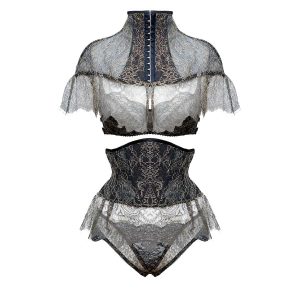Show Me The Money: How Do Lingerie Designers Balance Creativity and Commercial Viability?
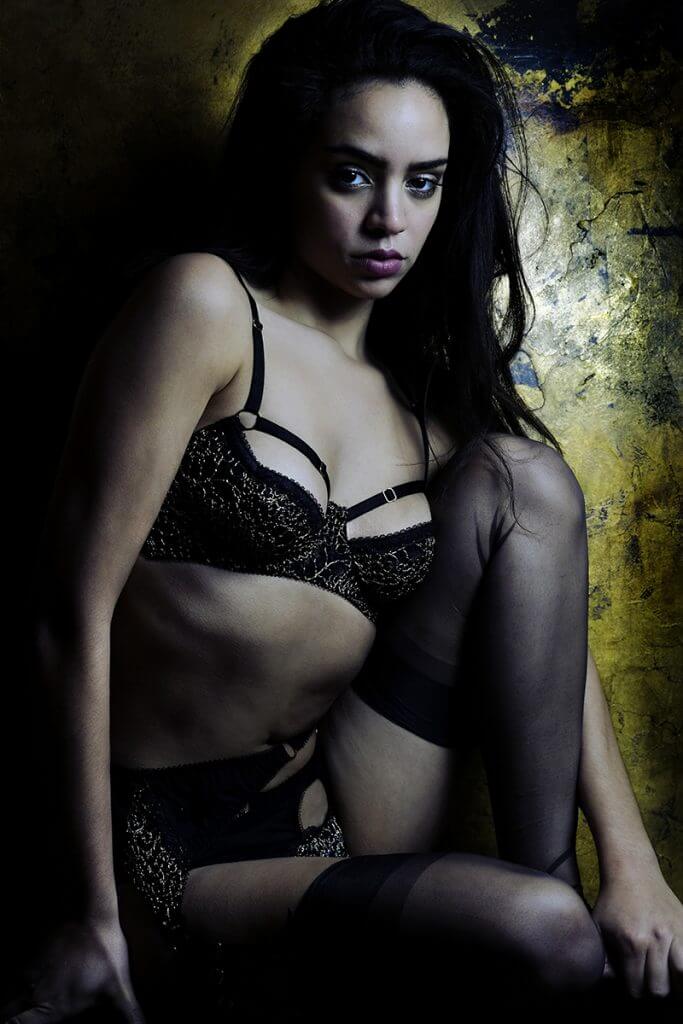
The 'Ara' range from my 2016 collection was less an exercise in creativity, and more one in trying to hit a particular price point that would sell in greater volume. The garment shapes had been designed well over a year ago, and for this collection I simply used different materials.
Lingerie by Karolina Laskowska. Photography by Jenni Hampshire. Modelled by Yazzmin Newell
As a lingerie designer, people often tell me my work sounds like a ‘dream job.’ An aura of fantasy and glamour surrounds the fashion industry. However, the reality is lingerie design can be pretty boring most of the time, with very little creativity involved at all.
Success in the lingerie industry comes more easily to those with a business mind rather than those with the best designs. Fashion schools don't always teach business, instead choosing to focus on creative disciplines. This can be incredibly disheartening for lingerie designers like me who enter intimates for the creative opportunities. My namesake lingerie line is 5 years old now, and in that time I’ve learned a lot. Namely, you usually have to sacrifice creativity to pay the bills.
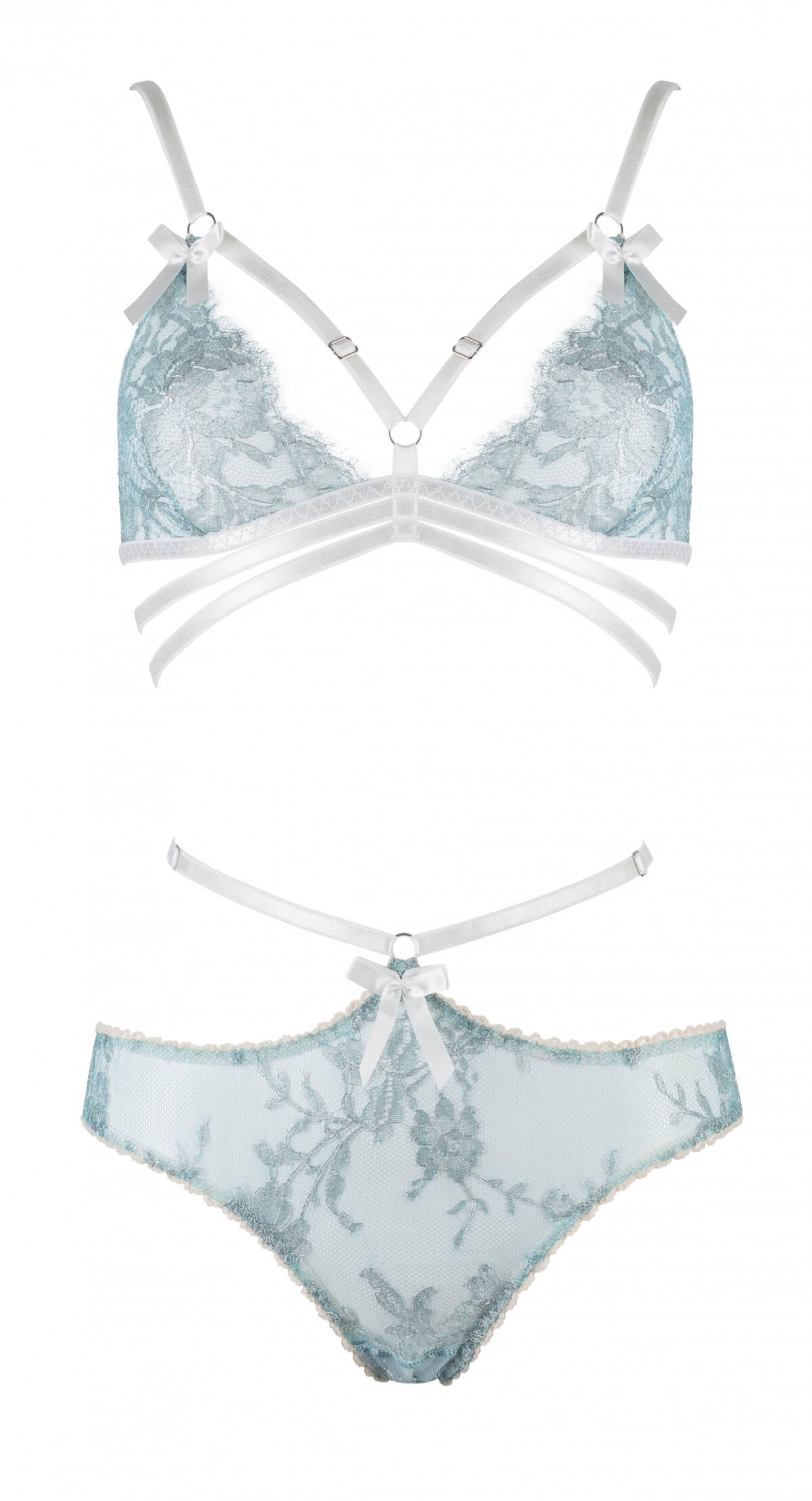
The 'Ela' lingerie set shape has been a best-selling staple in most of my collections. Sewing it again in another colour of lace doesn't exactly involve much creativity, but it does bring money into the business.
Design by Karolina Laskowska
In Business, Profit = Success
Like any other business, success in lingerie comes down to money. Yet unlike most other areas of fashion, it's incredibly difficult to stay profitable. Lingerie has relatively low profit margins. Wired bras especially are some of the most complex garments in your wardrobe, and they require huge size ranges. Even for brands creating only a 'small' size range, the costs of the minimum 12 sizes (32-36 bands, B-D cups) can add up very quickly. Compare that to the 3 sizes (Small, Medium, Large) in a basic ready to wear range.
These costs are why you see large brands recycling the same garment shapes, same trends, and same fabrics. It’s also why continuity lines are almost always black and white. Developing new bra shapes costs a lot of money.
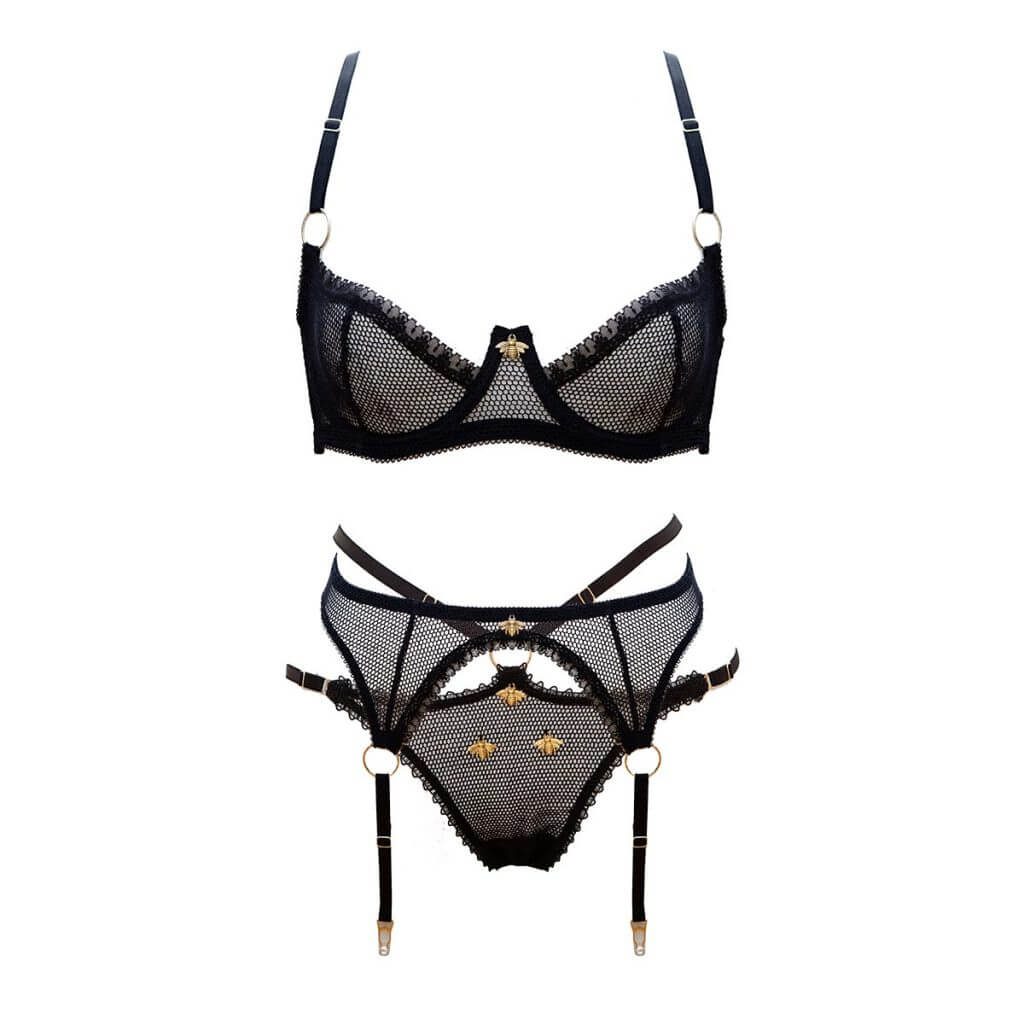
All black lingerie consistently sells much better than anything colourful in my experience. Although this can limit the design process, profitability must come first for a business.
Design by Karolina Laskowska
Bucking industry trends or using unusual colours means great financial risk as you’re a lot less likely to sell the garments. Bottom line: a product needs to sell, and most customers don’t like to experiment too much with their underwear shopping. Businesses must cut down on risk as much as possible if they want to turn a profit.
All of the above explains why certain collections never make it to "market" (that is, for sale to consumers). Boundary pushing design is often admired from afar, but retailers and consumers are rarely willing to pay for it.
I can understand why. Retailers struggle to sell unusual designs. Consumers struggle to find reasons to wear them. And this means the modern lingerie market can feel a little stagnant.
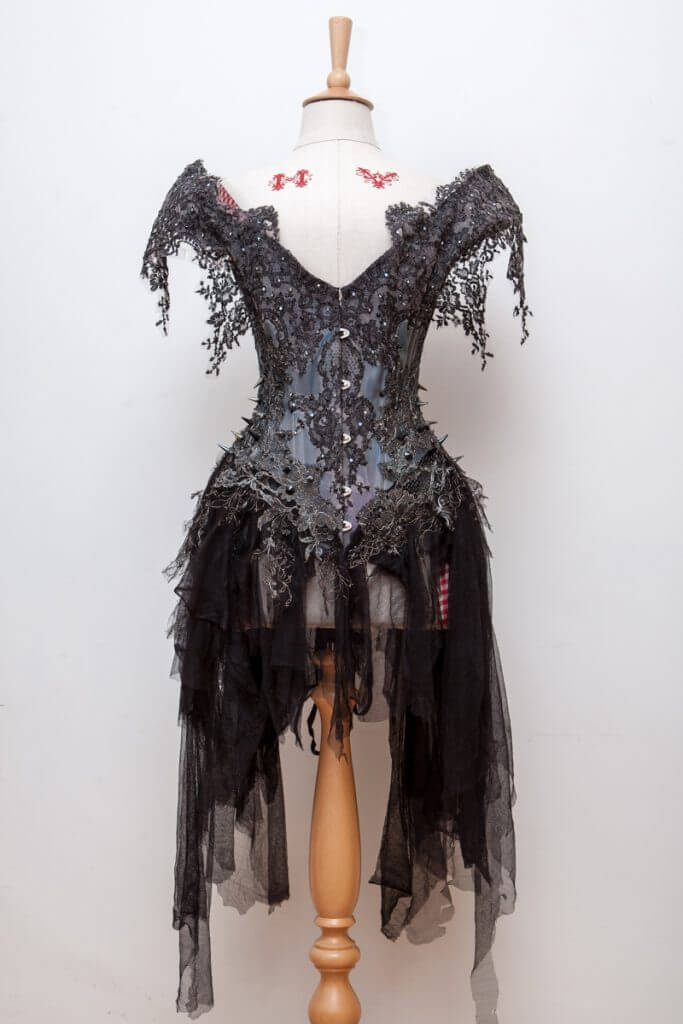
This corset is one of my favourite designs that I've created. However, the combination of expensive materials and over 100 hours of hand labour mean that with my usual margins it would have to retail at around £10,000. I have no intention of ever selling a garment like this and it's purely the joy of creation that motivates me to design pieces like this.
Design by Karolina Laskowska
Creativity is Expensive
It's also true that creative design is often synonymous with expensive design. Creating beautiful lingerie that at least some potential customers can afford is one of the greatest challenges a designer faces.
In my business, where I still personally sew the majority of garments, I have to balance the high cost of manufacturing and the cost of quality materials. These two elevated costs can severely limit what you’re able to create before the garment hits impossibly expensive numbers.
When I make pieces myself, I consider a ‘cheap’ underwire bra to retail around the £80 (~$98 USD) mark. This is already expensive for the average customer. Yet, that price is the bare minimum that I can charge to cover the cost of premium fabrics, my labour and other business costs...even if the design is ‘simple.’
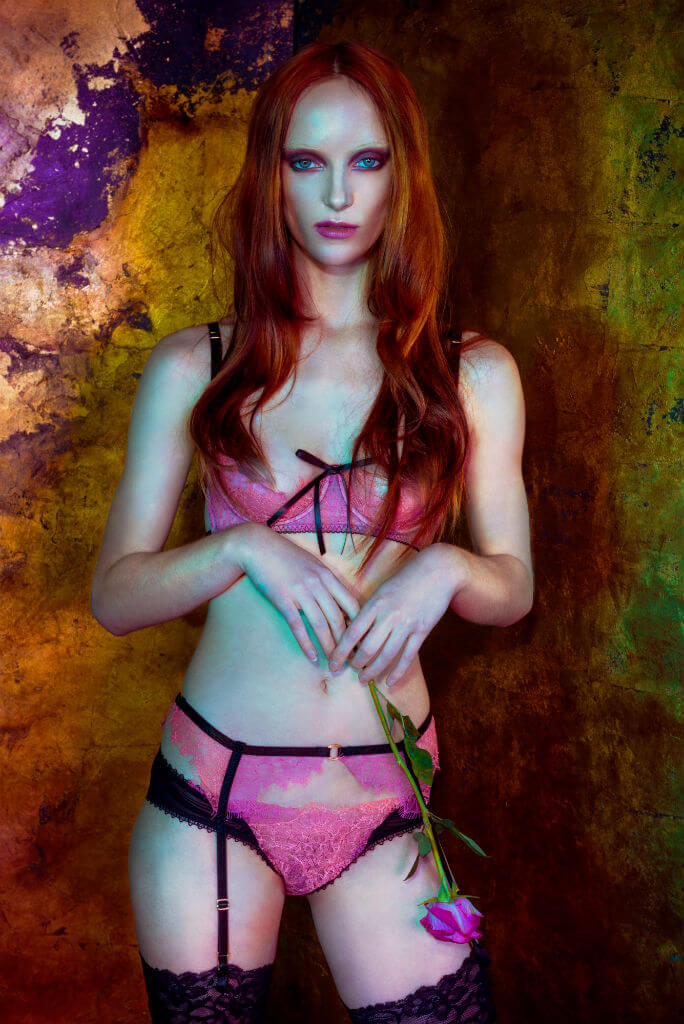
The profuse use of scalloped French lace in this set is what elevated the price so much, as it was actually a relatively simple design to sew. The bra alone retailed at around £150, due to the multilayered lace cup construction.
Lingerie by Karolina Laskowska. Photography by J Tuliniemi. Modelled by Maxine Anastasia. MUA by Jade Crean.
Every design detail in lingerie quickly adds up. Lace scallops can double fabric usage. An extra stitch operation (such as an elegant French seam rather than a cheap overlocked seam) increases costs. The decision to invisibly hand sew a bow or quickly machine-stitch it changes the price. All of these careful considerations stamp out the creativity, converting it to basic mathematics.
Nevertheless, lingerie designers still create extravagant and eye-wateringly expensive pieces. Believe it or not, these are rarely intended for sell. Whether it’s an exquisite embellished corset or a crystal-strewn lace gown, these showpieces still serve a function.
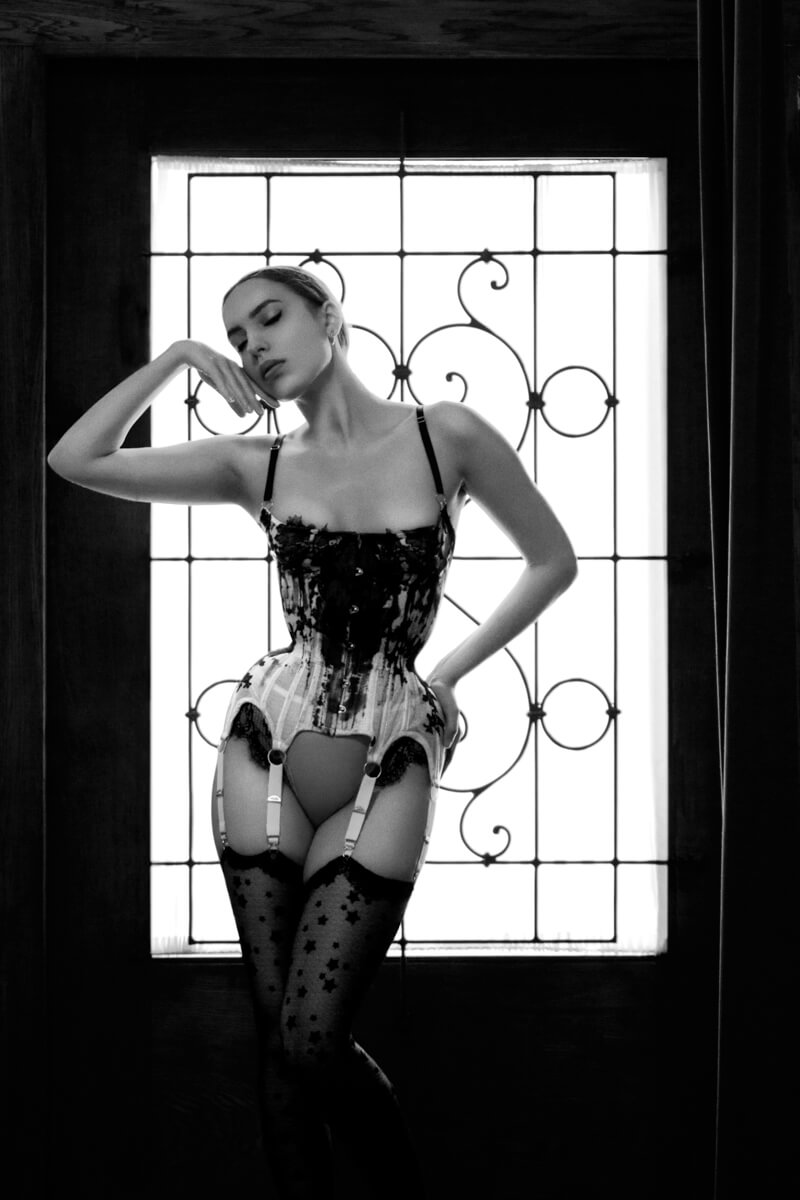
Last Summer, as an antidote to my most 'commercial' collection yet and largest production runs, I created a mini collection of couture corsetry. This collection was incredibly work intensive and has never been for sale, thus bringing in no direct sales to the brand. However, I have no doubt that these designs helped to make many people aware of my other products.
Design by Karolina Laskowska. Photography by A. Lindseth.
Why Make What You Can't Sell?
Showpieces, impossible as they are to afford, are the garments that make people aware of a lingerie brand. They’re pieces of stunningly beautiful design meant to covet and remember. These pieces direct people to the brand’s other products, the ones that they can afford. Showpieces also mean the designer has an opportunity to stretch their creative wings and create beautiful editorial imagery just because they can.
Lingerie design is rarely a well-paid job. For independent lingerie designers like me, it’s a job you do for the love of design, rather than for any serious financial gain. Balancing the creative and the commercial is a challenge, but the occasional opportunity to create decadent lingerie for the sheer joy of it can make it all worthwhile. After all, the other option of being a designer for a corporate brand would mean sacrificing creative freedom, even if the trade-off is an easier job!
Love lingerie? Don't forget to follow The Lingerie Addict on Twitter!





